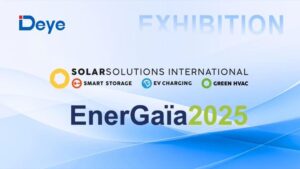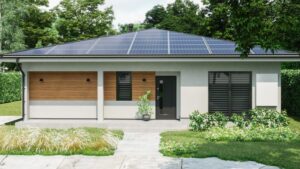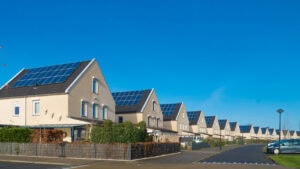Getting the most out of your solar panel investment comes down to one crucial factor: orientation. The direction and angle of your panels can boost your energy production by up to 30%. In the Northern Hemisphere, your panels should face true south, while in the Southern Hemisphere, they need to face true north. The ideal tilt angle for your panels is equally important and should generally match your geographic latitude.
This guide will walk you through everything you need to know to achieve the perfect orientation, from seasonal tilt adjustments to accounting for local shading and using the right tools to find your optimal positioning.
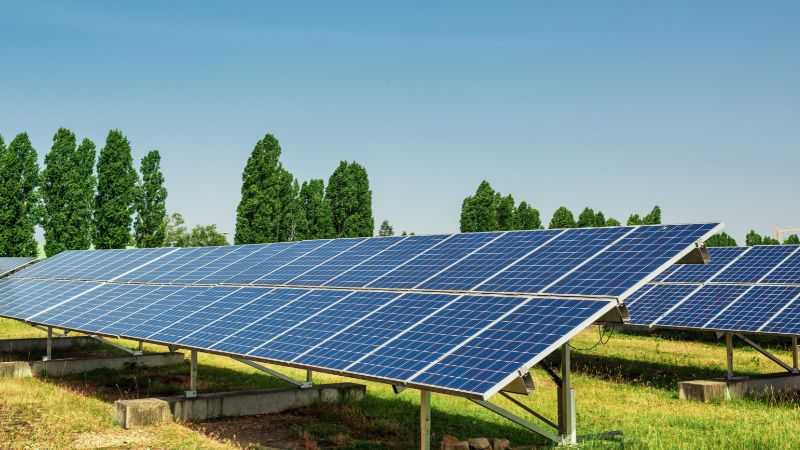
What Exactly is Solar Panel Orientation?
Solar panel orientation is all about positioning your panels to capture the maximum amount of sunlight throughout the day. It’s a combination of two key factors: the direction the panels face and their tilt angle.
The Difference Between Orientation and Tilt
While often used interchangeably, orientation and tilt are two distinct aspects of panel positioning:
| Aspect | Orientation | Tilt |
| Definition | The compass direction the panels face (N, S, E, W) | The angle of the panels from a horizontal surface |
| Measurement | Degrees from north (0-360°) | Degrees from flat (0-90°) |
| Primary Impact | Determines the timing of daily sun exposure | Optimizes for the seasonal angle of the sun |
Think of it this way: orientation sets the stage for daily performance, while tilt fine-tunes it for seasonal changes.
Why Orientation is a Important for Solar Energy
Proper orientation has a massive impact on your solar panel’s energy output. When panels are not positioned correctly, they can suffer significant performance losses. The sun’s rays are most effective when they hit the panel surface perpendicularly. Poor orientation means the sunlight strikes at a less-than-ideal angle, reducing the amount of energy converted into electricity.
Here’s how performance can vary by orientation:
- Optimal Direction: 100% potential output
- 45° Off-Optimal: 10-20% reduction
- 90° Off-Optimal: 30-40% reduction
Optimal Solar Panel Orientation
The direction and angle of your solar panels are the keys to unlocking maximum energy production. Here’s how to get it right.
The Best Direction for Maximum Energy
For most locations in the Northern Hemisphere, the magic direction is true south. This orientation ensures your panels are bathed in direct sunlight for the longest part of the day. In the Southern Hemisphere, the opposite is true: your panels should face true north.
It’s important to note that true south is different from magnetic south. You can use online declination calculators or smartphone apps to find the precise true south bearing for your location.
While east and west-facing panels produce about 15-20% less energy, a west-facing orientation can be a smart choice if your household’s energy consumption is higher in the afternoon.
The Role of Latitude and Geographic Factors
Your geographic latitude is the secret to finding the perfect tilt angle. As a general rule, your panel’s tilt angle should be equal to your location’s latitude for year-round optimization.
Here are some guidelines for tilt angles by latitude:
| Latitude | Recommended Tilt |
| 0-15° | 15° |
| 15-45° | Equal to latitude |
| Above 45° | Equal to latitude + 10-15° |
Local geography also plays a role. Mountains, hills, and even tall buildings can cast shadows that reduce energy production. Coastal areas may have different optimal angles due to atmospheric conditions and reflected light from the water.
Fine-Tuning with Seasonal Adjustments
For those who want to squeeze every last drop of energy from their panels, seasonal adjustments can increase production by 5-15%.
- Summer: Decrease the tilt angle by 10-15° to capture the high summer sun.
- Winter: Increase the tilt angle by 10-15° to better catch the low-lying winter sun. This also helps snow slide off more easily.
How Shading and Angle of Incidence Affect Efficiency
Even with the perfect orientation, a few factors can still impact your system’s performance.
The Power of Direct Sunlight
The more hours of peak sun your panels receive, the more power they’ll generate. Here’s a quick breakdown of peak sunlight hours by orientation:
- South-facing: 6-8 hours
- East/West-facing: 4-6 hours
- North-facing: 2-4 hours
The High Cost of Shading
Even a small amount of shade can have a huge impact. A shadow covering as little as 10% of a single panel can slash its output by 50% or more. Be mindful of potential obstructions like:
- Trees and large bushes
- Neighboring buildings
- Chimneys and roof vents
- Power lines
The Angle of the Sun
As we’ve mentioned, panels are at their best when sunlight hits them directly. As the angle of the sun becomes more indirect, power generation drops. Seasonal adjustments can help you maintain the optimal angle of incidence throughout the year.
Regional Recommendations for Solar Panel Placement
Solar panel orientation isn’t a one-size-fits-all solution. Here’s a look at what’s best for different parts of the world.
Northern Hemisphere
In the Northern Hemisphere, your panels should face true south. The ideal tilt angle is generally equal to your latitude. For example, if you live at 40° north latitude, a 40° tilt is a great starting point.
Southern Hemisphere
For those in the Southern Hemisphere, a north-facing orientation is the way to go. The same latitude-based formula for tilt angles applies here. A location at 30° south latitude will perform best with panels angled at 30°.
Equatorial Regions
Near the equator, the sun is almost directly overhead for most of the year. This gives you more flexibility in your panel placement. Here are a few options:
- Flat or low-tilt mounting (0-10°)
- An east-west orientation to capture both morning and afternoon sun
- Dual-axis tracking systems for maximum efficiency
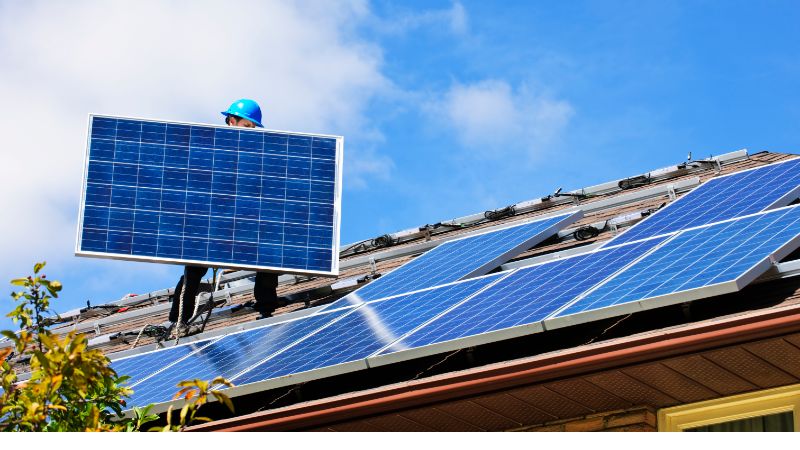
Common Mistakes to Avoid
A few common mistakes can lead to significant energy losses. Here are the top three to watch out for:
- Incorrect Compass Readings: Many installers forget to account for the difference between magnetic and true north, which can lead to a 3-4% reduction in energy production.
- Ignoring Your Roof’s Shape: Don’t force a standard south-facing layout onto a complex roof. Sometimes, a larger, slightly off-optimal roof section will generate more power than a smaller, perfectly oriented one.
- Overlooking Obstructions: This is the most expensive mistake. Failing to account for year-round shading from trees, buildings, or even roof vents can slash your output by 20-30%.
Tools for Finding the Perfect Orientation
Fortunately, you don’t have to guess when it comes to finding the right orientation. Here are a few tools that can help:
- Solar Pathfinders: These professional optical devices allow you to see the sun’s exact path for any time of year, making it easy to spot potential obstructions.
- Smartphone Apps: Apps like Sun Surveyor or SunCalc use your phone’s camera and sensors to overlay the sun’s path onto your surroundings.
- Online Calculators: Websites like PVGIS and the NOAA Solar Calculator use climate and geographical data to provide precise, location-specific recommendations for tilt and orientation.
Advanced Options: Adjustable and Tracking Solar Panels
For those who want to take their energy production to the next level, adjustable and tracking systems are a great option.
- Manual Adjustment: This involves manually changing the tilt of your panels 2-4 times a year. It’s a low-cost way to get a slight performance boost.
- Single-Axis Trackers: These systems automatically follow the sun from east to west, increasing energy production by 15-25%.
- Dual-Axis Trackers: These are the gold standard, tracking the sun both daily and seasonally for a 25-35% energy gain. However, their high cost makes them rare for residential use.
Special Installations: Flat Roofs, Ground Mounts, and Carports
Not all solar installations are on a sloped roof. Here’s how to handle orientation for a few special cases.
Flat Roofs
Flat roofs offer a lot of flexibility. You can position your panels at any angle and direction. A south-facing orientation is still ideal in the Northern Hemisphere, but you can also opt for an east-west configuration to maximize energy production during peak demand hours. Just be sure to space the rows of panels far enough apart to avoid shading each other.
Ground-Mounted Arrays
Ground-mounted systems offer the most flexibility of all. You can achieve the perfect orientation and tilt without any roof constraints. These systems are also great for adjustable and tracking systems.
Solar Carports
Solar carports have to balance energy generation with their primary function of providing parking. Most carports use a south-facing orientation with a low tilt angle of 5-15° to accommodate vehicle clearance.
By taking the time to understand and implement the right solar panel orientation, you can ensure your system is working at its full potential, giving you the best possible return on your investment.

